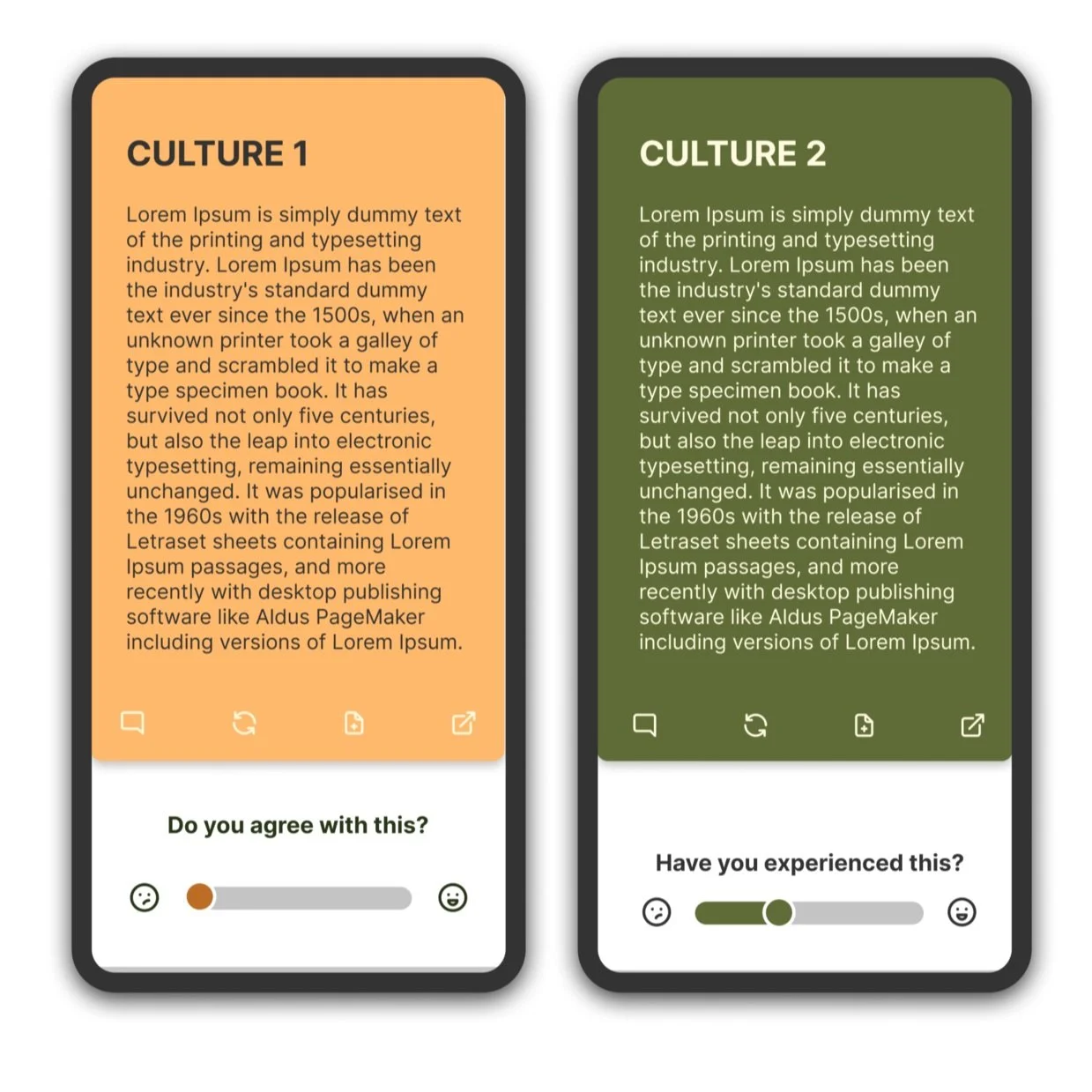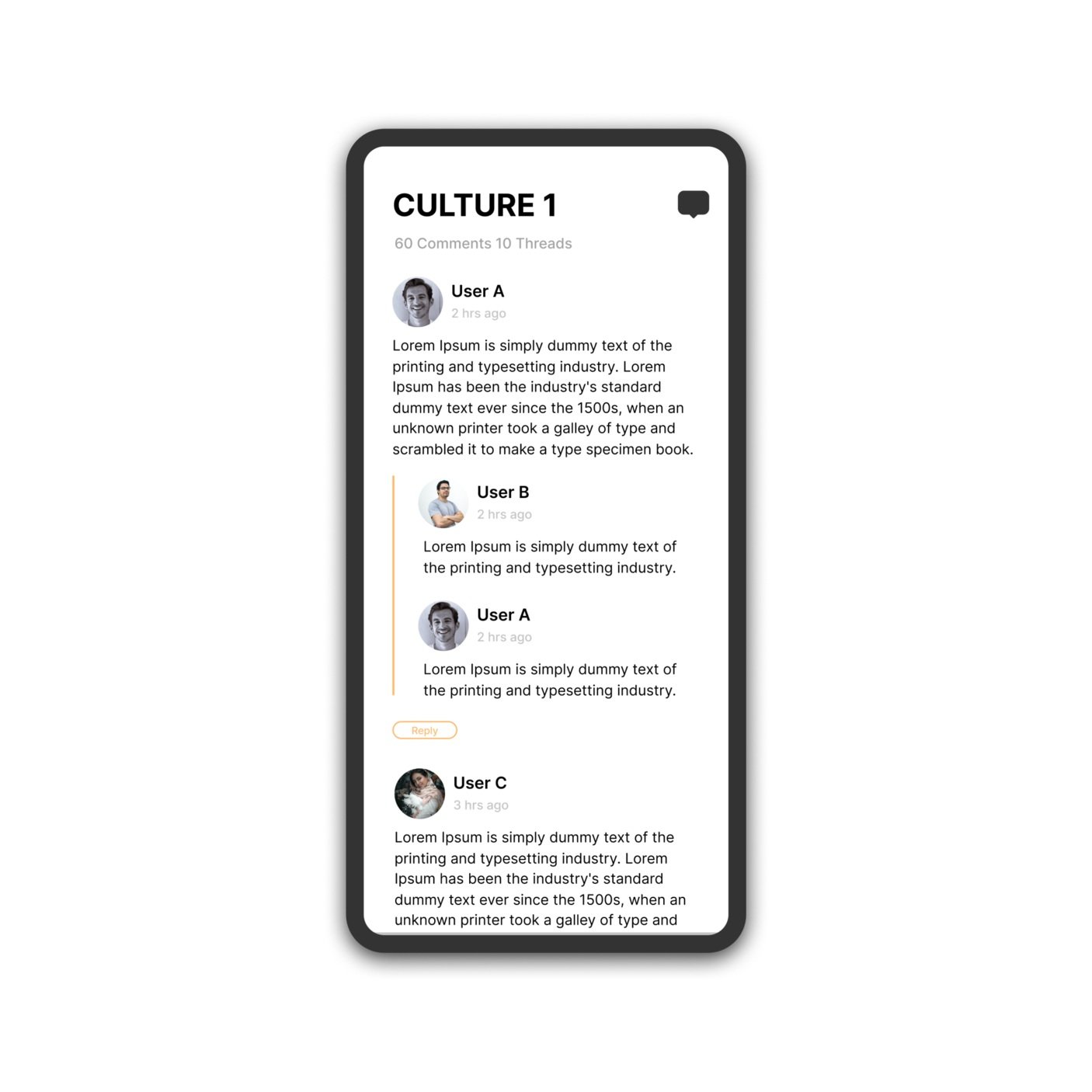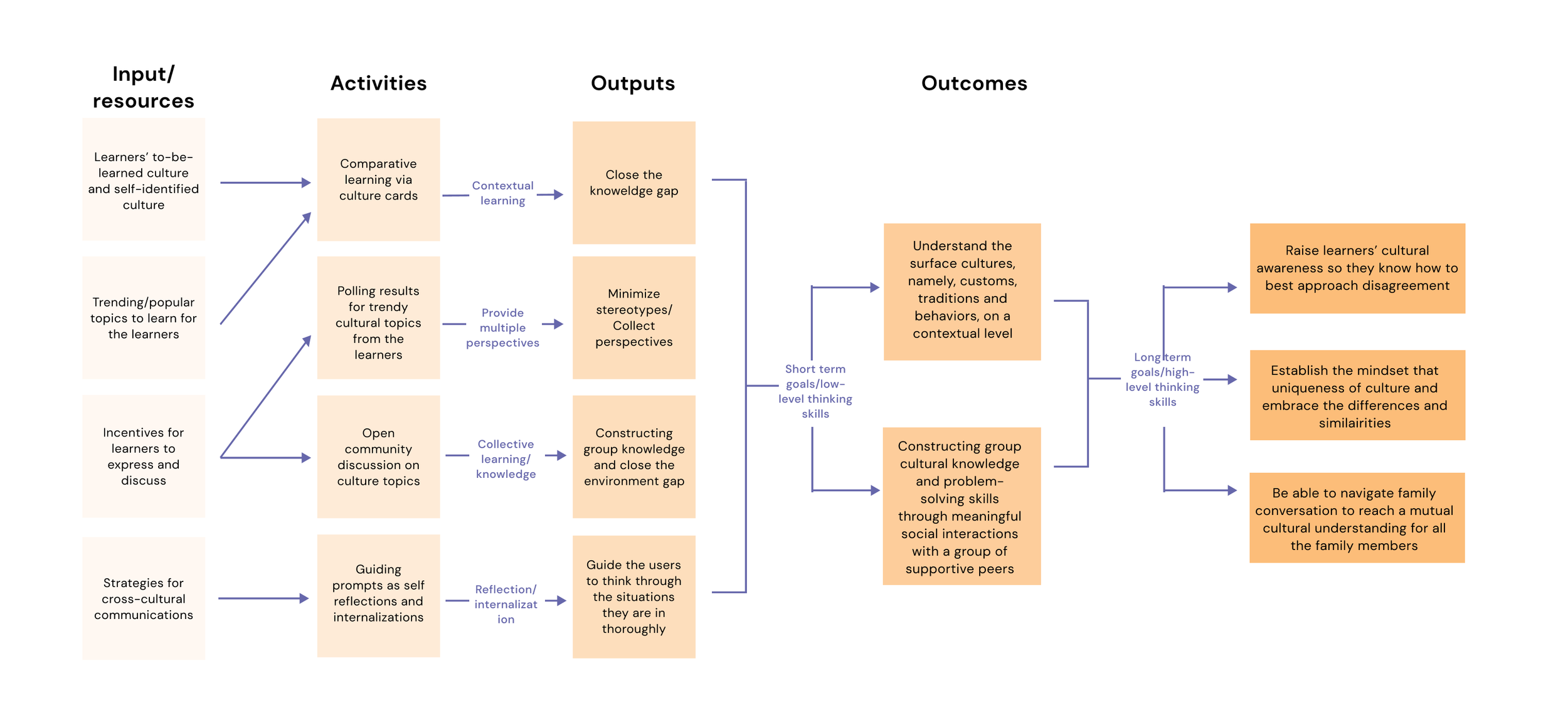
Convive
Phase 1: Research
Timeline: Sept. 2021 - Dec. 2021

Phase 1 Introduction
The thesis project is a two-semester-long solo project. In the first semester, I started literature and user research in order to identify the problem in multiculturalism and family communication. On this page, I am sharing my findings in the research phase in order to narrow down my problem scope with enough evidence and user research.
Quantitative research
Multiculturalism brings a number of benefits to a household. The different experiences of food, language, and many other aspects of the culture, bring every family member opportunities to foster a sense of exploration of this beautiful world, as well as tolerance of others' heritage, cultures and beliefs, which play an essential role under this globalization climate.
However, families are more than groups of people who live and share the same house. "They[Family members] should be a source of love and support. This does not mean that everyone gets along all the time," according to MedlinePlus on its family issues page. Conflicts and disputes are parts of family life, cultural differences can bring another set of opportunities and challenges that might either be beneficial or problematic for the family. Even though each household is unique on its own, there are some main categories I summarized from the two Reddit threads based on what people have shared:
Oral and verbal communication: the languages each family member or their extension families speak
Parenting and education:
Identity confusion and cultural dissonance for the younger generations of the family in particular
Raising bilingual/multilingual kids
The emphasis on education and its role in the children’s lives
Cultural clashes on lifestyles (for example, eating habits, customs, etiquette, etc)
Religious beliefs and political views
Values and beliefs when encountering life situations or scenarios
Many more…
This project is a design project that aims for digital solutions on communication problems and issues that happen in cross-cultural families based on research results and design and learning principles.
Problem statement
Root problem
“Sometimes, people make assumptions or develop ideas about another cultural community without really understanding the internal or deep culture that makes up the majority of that culture’s values and beliefs." This perspective of cultural challenges among cross-cultural families shows in some of the responses from the Reddit thread, for example: "Communication. Not just the language barrier, a lot of times there are so many unspoken manners and assumptions among the two cultures.” (ITS_A_GUNDAAAM, Reddit thread, 2017). More than often, cultural misunderstanding occurs when assumptions are made because of stereotypes, prejudice, biases or just simply lack of knowledge, based on the cultural background of the person who is interpreting the situation.
Cultural localization is also common causation: one might adopt their partner’s culture to meet the language and cultural norms and requirements of their own, and sometimes, it might create misunderstandings because the norms are so different over one topic between the two cultures.
Problem statement
How might we support younger adults of cross-cultural families to better understand and relate to their partner's culture so that they can conduct more effective, inclusive and respectful cultural conversations at the early stage of their family life?
Goals and user group
Target audience
My target learners are younger adults (20-40) who:
are thinking about building or just building their cross-cultural families with significant others who are from a different country in particular
already built cross-cultural families but are still facing some challenges in terms of cultural communication and exchange
My secondary learners are adults who are interested in learning about cultural exchange for various social settings
Learning goals
For this potential design product, some of the short-term goals are:
Understand the surface cultures, namely, customs, traditions and behaviors, on a contextual level, through comparing and contrasting
Implement what has been learned to learner’s daily life situations, conversations or any forms of cultural dialogues
Identify the potential causes of the differences learners experienced /are experiencing
Prepared with expectations for some typical cultural situations with the preferred reactions and problem-solving skills
Constructing group cultural knowledge and problem-solving skills through meaningful social interactions with a group of supportive peers
Some of the long-term goals are:
Distinguish the important and unimportant cultural differences to their own families and themselves
Build and establish learners' respect and empathy for other cultures and celebrate the differences and similarities
Develop strategies to conduct effective and respectful cultural interactions, conversations and negotiations within their cross-cultural families (including the nuclear family and the extension families)
Reframe their unique family cultures and values that reflect and respect every family member's culture inclusively
Build supportive and safe social learning groups with peers who are in similar situations to further enhance active learning
Design approaches
Combining all the design ideas and theories with the consideration of findings from user research, here comes my design solution for my target users to solve the problem: Convive, a mobile application that helps the learners to learn “deep culture” topics in context. Convive is a solution to solve potential culture-related misunderstandings and arguments in a family situation by preparing the users with the actual knowledge of the cultural differences in context, in order to come up with more effective and considerate cultural conversations, dialogues, and negotiations. The learning activities are designed based on Adult Learning Theory, Social Constructivism, and Active Learning. Here are some key features of Convive that aims to solve the following pain points.
Pain point #1: Concerns of stereotypes, generalizations, and biases
Potential solution: providing multiple lenses
Convive combines real-life experiences and contextual cultural analysis and prepares the learners to have the mindset that cultures can be very different from person to person also in a way of the installation of a user rating system.
This rating system collects users’ responses which serves as a reference for users and helps them to develop the mindset of “culture doesn’t apply to every individual” to minimize stereotypes.
Pain point #2: no access to learn culture anytime and anywhere
Potential solution: Contextual learning
Connive has a list of topics and categories of culture cards based on the cultures the users choose to learn and feel most associated with. By comparing and contrasting the similarities and differences of the targeted cultures and the learners' self-identified cultures that they most associated with, the learners will develop knowledge in the context of the following aspects:
To what aspects are the two cultures different
Why are they different in terms of core values
Pain point #3: Confusion of causations
Potential solution: providing solutions and guidance
A simple data visualization is used as a quick survey to guide the learners through a thinking process when they encounter differences with the consideration and respect of various factors.
Pain point #4: need of learning from others’ experiences
Potential solution: Social Constructivism
Participants from the survey expressed their needs and interests in learning by reading stories from other people who are in similar situations, however, right now at moment, there is no such a platform that cross-cultural family members can discuss and talk as a collective and supportive group.
Convive provides an open and safe community to share experiences and ask questions to a group of supportive peers of similar situations by creating their own virtual identities.
Logic model
The solutions to the pain points identified based on quantitative research and user research are designed to solve the problems so the learning gaps between the learning context and learners can be minimized or closed. In the longer term, the solutions are aimed to lead the learners to meet the short-term goals and even long-term goals after a continuous and active learning process with Convive.




